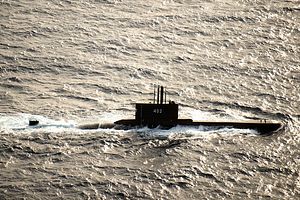On April 25, Indonesia officially received the second of its three submarines that it had ordered from South Korea in a delivery ceremony. The development once again put the spotlight on both the Southeast Asian state’s capabilities as well as its relationship with Seoul in the defense realm.
As I have noted before, though Indonesia once operated one of the more capable submarine forces in Asia, with 12 Whiskey-class submarines purchases from the Soviet Union back in the 1960s and ’70s, today it is woefully underequipped, with just two German-built Type 209 submarines along with three South Korean submarines initially ordered back in 2012. Even with those three South Korean submarines, with the Type 209s expected to be decommissioned soon, Indonesia would still be well short of the 12 submarines Indonesian defense officials have said the country needs to police its waters.
Though several other orders have been mulled, the focus has continued to be on progress related to the South Korean submarines, both in terms of the capability itself as well as its broader implications for the Indonesia-South Korea defense relationship, which was elevated to a special strategic partnership last November during South Korean President Moon Jae-in’s visit to Indonesia (See: “What’s Next for Indonesia-South Korea Defense Ties?”). One of the three submarines was received from South Korea last year, another was set for delivery this year, and the remaining one was set to be constructed in Indonesia.
Earlier this month, Indonesia’s South Korea-built submarines had been in the headlines once again when Indonesia’s military chief Hadi Tjahjanto led a delegation to visit the Daewoo Shipbuilding and Marine Engineering (DSME) shipyard in South Korea where submarine work had been ongoing. During his visit, it was confirmed that the second South Korean-built submarine would be coming to Indonesia soon, with the submarine, which will be in the service as KRI Ardadedali with pennant number 404 after commissioning, beginning its journey from South Korea back home to Indonesia in late April (See: “What’s Next for Indonesia’s Submarine Fleet?”).
On April 25, Indonesia officially received its second submarine, with a delivery ceremony that was held at the DSME facility in Okpo, featuring Indonesian Defense Minister Ryamizard Ryacudu and other top Indonesian defense officials. Indonesian media outlets said the submarine was expected to arrive at the Indonesian naval base in Surabaya within two or three weeks of its departure from South Korea.
Ryacudu hailed the progress not only in terms of the delivery of the submarine itself and the strengthening of Indonesia’s capabilities, but the expertise and technological know how that Indonesia was gradually receiving, which will eventually enable it to make its own submarines. Though that end goal has certainly been one that Jakarta has been pushing in line with building its own defense industry, there are challenges to actually achieving that in reality. This includes not just building vessels, but also operating and maintaining them in the optimal way – something which Ryacudu himself touched on in his remarks as well.

































